Parasitology & Infectious Diseases
Parasites are living things that eat and survive off of other living things, such as your body. Contaminated food or water, an insect bite, or sexual interaction are all ways to obtain them. Some parasite infections are simple to treat, while others are not. Parasites range in size from microscopic one-celled organisms known as protozoa to large worms visible to the human eye. Human parasites are parasitic parasites that infect people. Parasitic diseases can affect almost every living creature, including plants and warm-blooded animals. Parasitology is the study of parasitic diseases, as well as infections caused by fungus and bacteria.
Germs, also known as microorganisms, can be found in the air, soil, and water. Germs can be found on your skin and in your body. Many of them are safe, and some of them can even be beneficial. However, some of them have the potential to make you sick. Infectious diseases brought on by germs.
- Medical parasitology
- Immunology and Host Specificity
- Ecology and Epidemiology
- Control of Parasitic Disease

Francis J Castellino
University of Notre Dame, United States
Ranjan Ramasamy
ID-FISH Technology, United States
Saurabh Chattopadhyay
University of Kentucky College of Medicine, United States
Rico Leonardo Lizbinski
Northern Light Health, United States
Sasha Leibholz
New York Presbyterian Columbia/Cornell, United States
Lauren Gruffi
New York Presbyterian Columbia/Cornell, United States



Title : Pathogen-derived noncanonical epitopes: Are they valuable targets for novel vaccinations and shall we be concerned about autoimmune responses?
Michele Mishto, Francis Crick Institute, United Kingdom
Title : Bioterrorism through the ages: Historical perspective, emerging threats, and medical countermeasures
Claudia Ferreira, Sorbonne University, France
Title : Changing population immunity to COVID-19 in the context of infection, vaccination, and emerging SARS-CoV-2 variants
Ranjan Ramasamy, ID-FISH Technology, United States
Title : Extensively drug-resistant bacterial infections: Confronting a global crisis with urgent solutions in prevention, surveillance, and treatment
Yazdan Mirzanejad, University of British Columbia, Canada
Title : Measles vaccination coverage indicators in 2023 and advance towards measles elimination and eradication by 2030
Pedro Plans Rubio, College of Physicians of Barcelona, Spain
Title : Severe influenza and other related respiratory infection cases during Omicron era in Japan
Masafumi Seki, Saitama Medical University International Medical Center, Japan